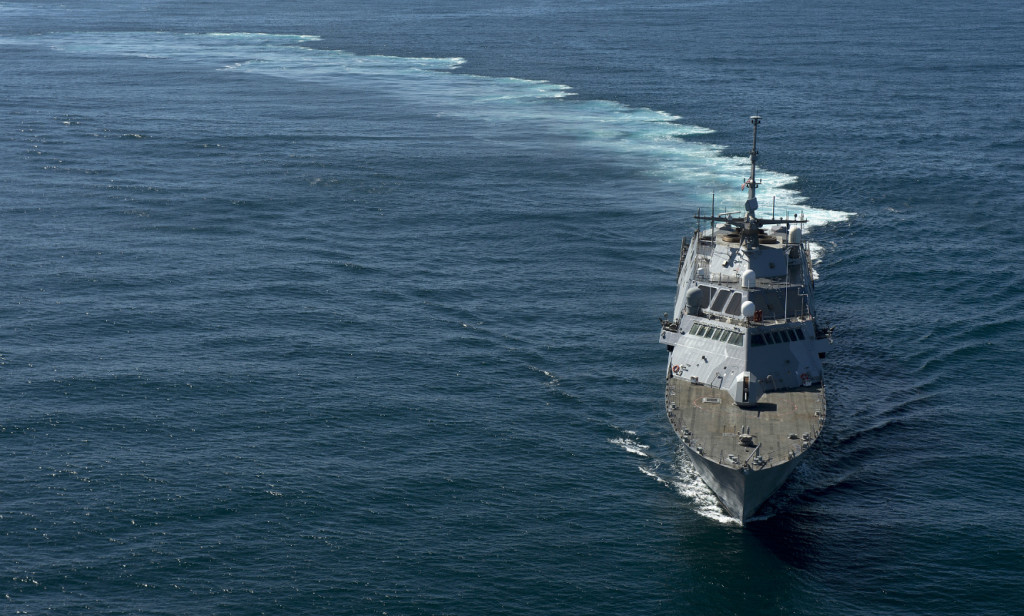21st Century Seapower, Inc.

Claude Berube, Syren’s Song: A Connor Stark Novel (Naval Institute Press, 2015)
When the Tamil Sea Tigers, the ferocious naval wing of the Liberation Tigers of Tamil Eelam (LTTE), was destroyed in the Sri Lankan government’s full-throttled spring 2009 offensive that put an end to the country’s decades-long civil war, few were sorry to see its demise. For while the group was a capable adversary of Sri Lanka’s navy, reportedly sinking dozens of Sri Lankan patrol boats, it was also accused of human rights abuses, including incidents of piracy and the murder of non-combatants. In Syren’s Song, the second novel by Claude Berube, the Sea Tigers are resurrected — plausible given the unresolved grievances of Sri Lanka’s Tamils that fueled the war — and they come bearing fearsome new capabilities. If you are a fan of techno-military thrillers and disappointed with the seven pairs of socks you received for Christmas, this quick-paced and enjoyable novel is for you.
This sequel to 2012’s The Aden Effect also brings back to life most characters from the precursor. Some, like Diplomatic Security Service agent Damien Golzari and hero Connor Stark, are welcome returns in Berube’s continuing exploration of the role of private maritime security companies (PMSCs) in the modern world. Other characters were perhaps best left for dead, such as the one-dimensional caricature of an overweening admiral, who seems to function primarily as a cartoonish vehicle for what I suspect are Berube’s views on the much-maligned Littoral Combat Ships (LCS) in the U.S Navy.
Although Syren’s Song primarily works to tell an engaging story — and here, it succeeds despite some minor distractions — it also raises interesting questions about the nature of strategic surprise, anti-access/area denial (A2/AD) weapons, experimentation in the Navy, sea-basing, and of course PMSCs.
The Sea Tigers’ early successes in the novel are owed in large part to the element of surprise (both “Surprise! We still exist!” and “Surprise! We have a secret new weapon!”). As the shock wears off, they are able to capitalize on the surprise because it becomes clear that what they have is also a great A2/AD weapon. It has been said that an A2/AD battle is an intelligence, surveillance, and reconnaissance (ISR) battle, and although such a maxim may really be true of every battle, Berube ably depicts how ISR is especially important in an A2/AD setting. Forces struggle to find and fix one another’s locations, use deception and disguise, rely on analog means of ISR in a communications-denied environment, and must take major risks in operational planning due to the ambiguity of the weapon locations.
The Navy will struggle to adapt to such surprises and weapons, implies Berube, without a greater emphasis on experimentation. Stark’s own re-christened experimental FSF-1 Sea Fighter serves in its operations as an endorsement of the concepts of tactical modularity and adaptive force packages, allowing mission planners to better react to changing situations and needs. Compared against a pair of loaner Littoral Combat Ships for the Sri Lankans, the vessel illustrates the advantages of private maritime forces that may employ commercial-off-the-shelf solutions — from translator smartphone apps to unmanned aerial vehicles — to cheaply impact mission outcomes. But Berube takes great pains to note the variable quality of PMSCs and the floating armories servicing their needs in less-restrictive international waters (as documented in this summer’s New York Times series “The Outlaw Ocean”) and does not portray them as a panacea. His setting of some of the opening scenes in Chennai, India hints at the limits of and complex legal dangers to operators of PMSCs. The city recently served as the courtroom location for jailed PMSC employees accused of weapons and fuel transfer violations in Indian waters.
The depiction of the Sea Tigers’ sea base, dispersed among converted tankers, cruise ships, and cargo vessels, points to the very real potential for sea-basing by non-state actors, civilian populations, and commercial enterprises. The confluence of advances in additive manufacturing, aquaponics, and renewable energy might lead to a future in which the means of production are available (if not readily so) at sea, if some people find such a location preferable to others ashore — or their only option. Not so much Waterworld as perhaps a return to the pre-modern sea nomadism of Southeast Asia, interacting with and a part of the modern world.
The formidable strengths of the novel easily overcome its weaknesses, such as a bit too much exposition and attempts at misdirection that act more like telegraphed punches. I close with two suggestions for a welcome third installment: a brief synopsis of previous developments instead of scattering them throughout the narrative, and an accompanying “recce” or recognition guide of the book’s varied vessels (perhaps in the form of a bookmark?). At the book’s end, Berube’s refreshing treatment of an under-examined subject leaves readers, including this one, looking forward to discovering into what stormy waters Connor Stark next sails.
To hear Claude discuss Syren’s Song, check out the War on the Rocks podcast. For more on experimental naval vessels, check out the M80 Stilleto, the R/V Sea Jet, and even odder creations at USNI News.
Scott Cheney-Peters is the founder of the Center for International Maritime Security (CIMSEC) and a Reservist in the U.S. Navy. He can be followed on Twitter: @SCheneyPeters.

